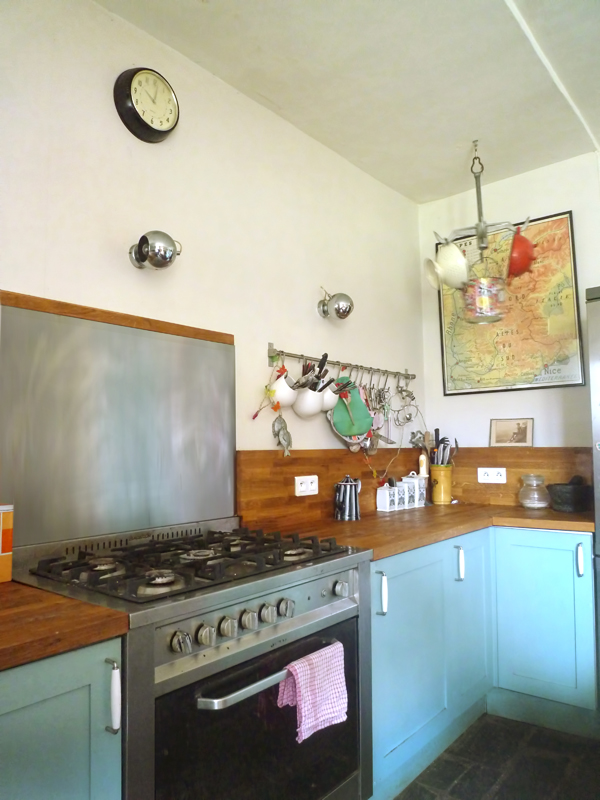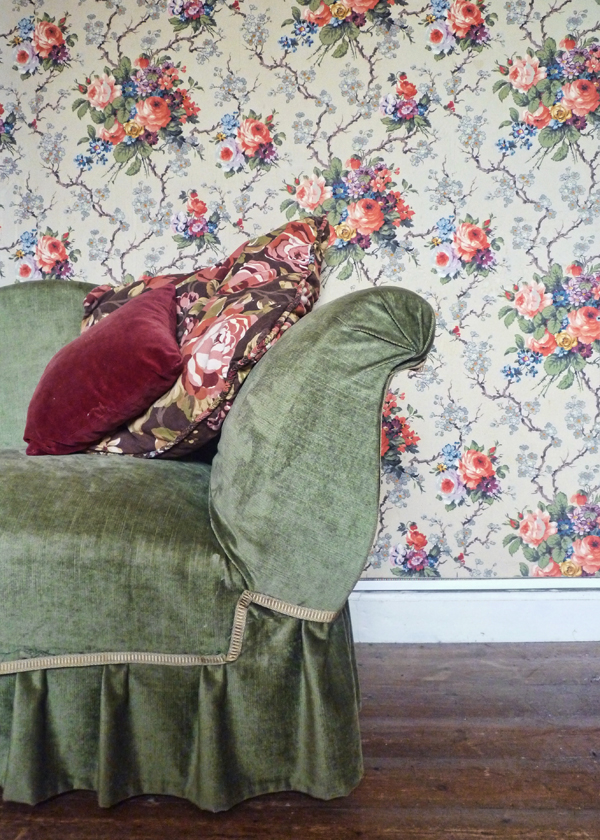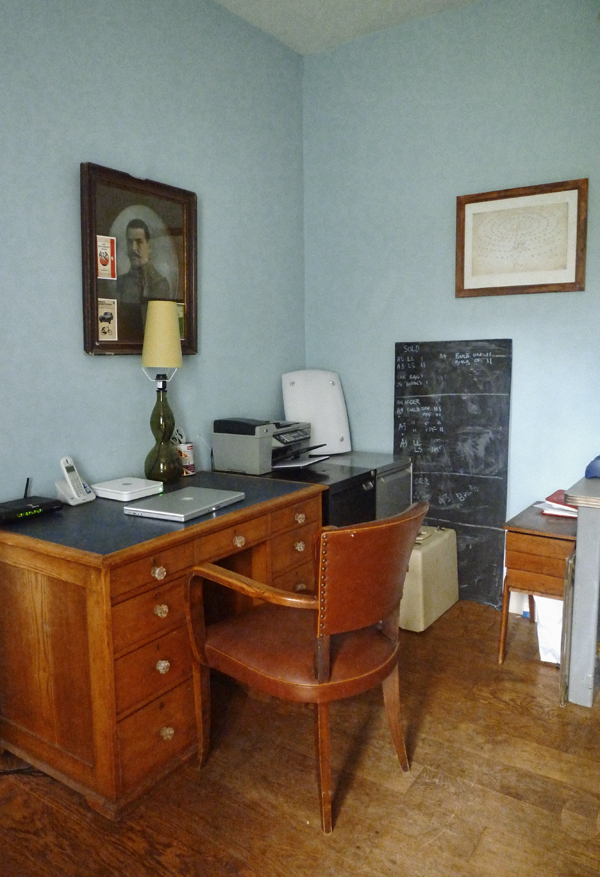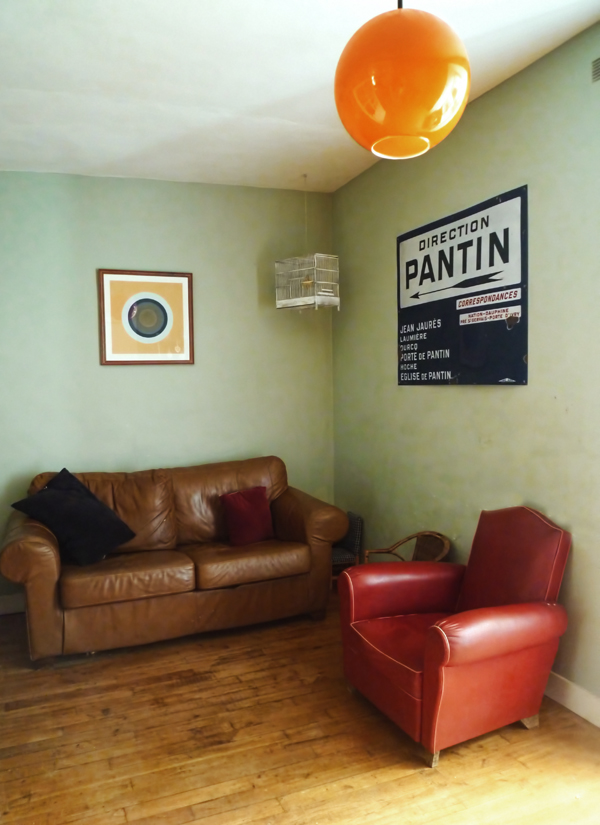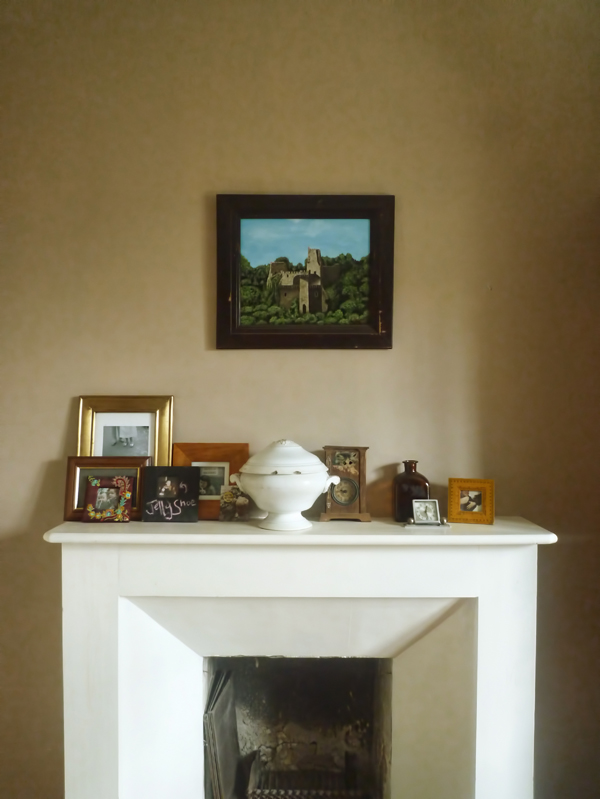On a road trip round France last summer we caught up with a friend in La Croisille-sur-Briance, a tiny village nestled deep in the Limousin region. Merrick Angle is an illustrator and designer who is both halves of Double Merrick (the name was coined by his daughter, Flora, who, when asked what could be better than Merrick, replied “double Merrick!”). My next post will showcase some of his beautiful prints, canvases and homewares, but first I want to show you his stunning, ivy-covered, family home. Having arrived at the house during the hottest part of the day, – we stepped out of the glaring sun and into cool shade provided by the house’s two-foot-thick stone walls. A unique home opened up before us: filled with vintage finds, antique furniture and an organic feel that can only evolve in a real home. One of the things I love most about the design of the house is that it doesn’t follow any rules; Merrick and his wife Alice have combined furniture from different periods with colours and fabrics, photographs, knick knacks and a lobster on a piano. This is what he told me:
“In 2004 we bought a wreck. The house hadn’t been lived in for 30 plus years, had no hot water and one socket for the whole house. It was February! On top of this we had no money, so work was a slow business. This in someways has been a blessing, as it forced us to live with the house and really think about how we used it before we could do any major work. Mainly, we have just decorated and done very little structural work (just rewired the house and put in a kitchen and a bathroom). Most of our furniture are things Alice has come across in her work as an estate agent or finds from brocantes and car boot sales.”
I asked Merrick, from a designer’s point of view, what advice he has about using colour, as this is something that I always struggle with:
“Push your boundaries. We all start off from a small space of what we consider ‘right’ and acceptable. And it is a small space! I started out wanting to paint every room in our house a bold, strong colour but through Alice’s (my wife) influence I have learnt a lot about nuance and tone. I think you have to be receptive to new ideas.”
Delight in these pictures of Merrick’s and Alice’s home and their unique style. I will introduce you to Merrick’s work in my next post…

Kitchens can too often feel clinical and characterless but here the simple addition of the photographs give another dimension to this space.

I’m just not sure what to say about this stove other than give it to me! Love the French signage too.
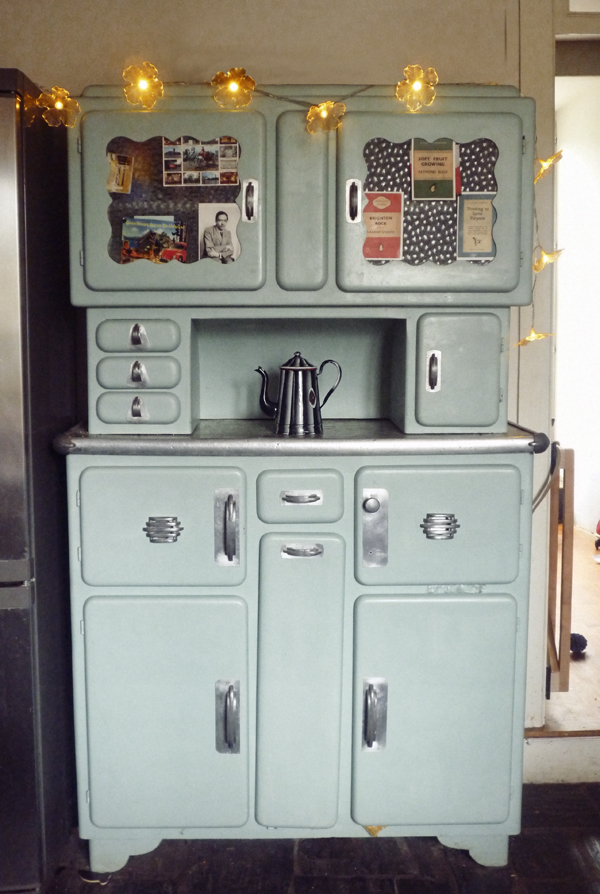
A 1950s cabinet adds another layer of interest to this kitchen. The mix of old, really old and new makes this room interesting and exciting.

A gorgeous, traditional window seat is a reminder of the age of the building and shows off the incredibly thick walls.
Jealous much?
Katy x
Photographs taken by Merrick Angle.

